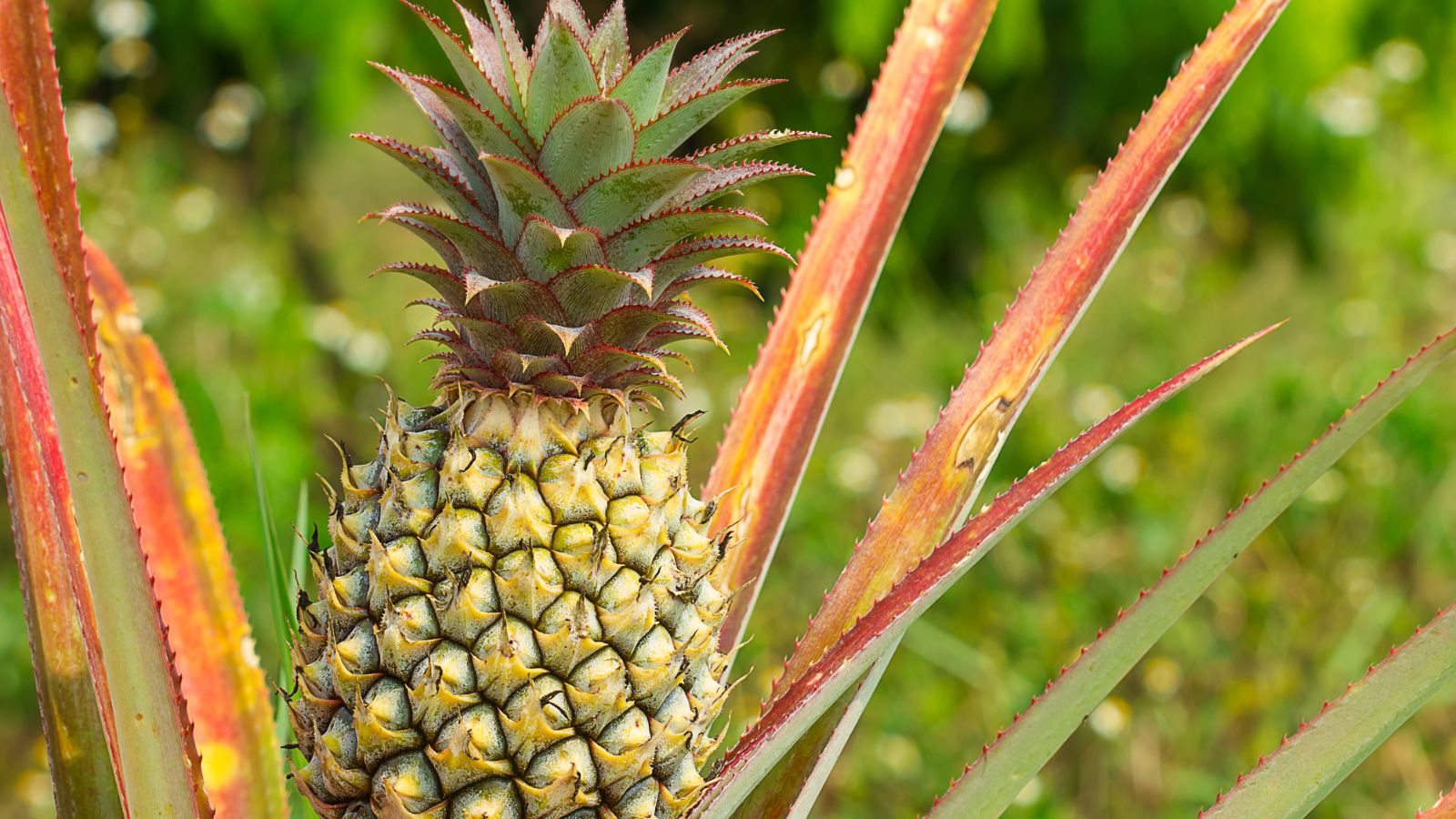
Is Pineapple Good for Diabetics? Smart Tips to Enjoy This Sweet Fruit Without the Spikes
Photo Credit: Canva Pro
Pineapple is tasty, juicy, and full of good things for you. You might be worried about it being safe to eat if you have diabetes, though. This post talks about whether pineapple is good for diabetics, how it changes blood sugar, and the best way to eat it.
We'll also talk about the best fruits, drinks for the morning, and pineapple snacks that are safe for diabetics. Find out what you need to know to make healthy, smart decisions.
🌺 Say Aloha to Clean Snacking — Click to Taste!
Is Pineapple Good for Diabetics?
Photo Credit: Canva Pro
Pineapple is a nutritious fruit that is good for you and offers health benefits, but it also has natural sugars in it. It's important for people with diabetes to watch how much and what kind of pineapple they eat. It can be part of a balanced diet if you do it the right way.
Nutritional Value and Benefits of Pineapple
There are important nutrients in fresh pineapple that are good for your health as a whole. People with diabetes should not eat too much of it, though, because it has a lot of sugar.
-
Choose fresh pineapple: It has no added sugar or preservatives, making it the healthiest option.
-
High in vitamin C: Supports the immune system and helps reduce inflammation.
-
Low in fat: Pairs well with healthy fats to reduce blood sugar spikes.
-
Hydrating fruit: Contains lots of water, which helps with fullness and hydration.
Best Ways for Diabetics to Eat Pineapple
Every pineapple is different. It changes blood sugar levels in different ways depending on how it's made.
-
Eat pineapple with meals: Pair it with protein or healthy fats to slow sugar absorption.
-
Avoid pineapple juice: It lacks fiber and causes quick spikes in blood sugar.
-
Be careful with canned pineapple: Especially avoid those packed in sugary syrup or fruit juice.
-
Limit dried pineapple: It's easy to overeat and has a high sugar content.
Will Pineapple Raise Blood Sugar?
Photo Credit: Canva Pro
Yes, pineapple can raise blood sugar levels, especially if you eat a lot of it or something that has been processed. But you can still enjoy it if you don't eat too much of it and eat it with the right foods.
Why Pineapple Affects Blood Sugar Quickly
It's easy for the body to break down the sugars in pineapple. If you don't handle this right, it can cause rapid blood sugar spikes.
-
Moderate glycemic index: Pineapple typically has a GI between 59–66 when fresh; pineapple juice has a higher GI of up to 73 due to lack of fiber.
-
High in sugar content: One cup of pineapple chunks can have about 16 grams of sugar.
-
Pineapple juice spikes blood sugar: Pineapple juice spikes blood sugar more rapidly due to its high GI, lack of fiber, and faster gastric emptying.
-
Dried fruit is concentrated sugar: Dried pineapple is more concentrated in sugar per gram due to water loss, making portion control especially important for blood sugar management.
Tips to Keep Blood Sugar Stable When Eating Pineapple
When prepared properly, diabetics can eat pineapple without making their blood sugar rise.
-
Choose fresh pineapple: Whole fruit has more fiber and nutrients than canned or dried versions.
-
Skip canned fruit in syrup: Look for options packed in water or natural juice without added sugar.
-
Add protein or fat: Eating pineapple with nuts or yogurt slows down sugar absorption.
-
Watch your portion sizes: A small slice or a few pineapple chunks is usually enough.
What Is the Best Fruit for a Diabetic?
Photo Credit: Canva Pro
There are different kinds of fruits that help keep blood sugar in check. Fruits with a low glycemic index are better for you because they don't change your blood sugar as much.
Top Fruits for Blood Sugar Control
To keep blood sugar levels steady, the American Diabetes Association suggests eating whole fruits that are high in fiber and have a low glycemic index.
-
Berries: Rich in fiber and antioxidants, with a low sugar content.
-
Apples and pears: Great fiber content and low on the GI scale.
-
Cherries: Among the lowest-GI fruits, ideal for blood sugar control.
-
Citrus fruits: Oranges and grapefruit offer vitamin C without spiking blood sugar like fruit juice.
How to Eat Fruit Safely with Diabetes
Change when and how you eat fruit instead of cutting it out. Fruit that hasn't been processed is always better.
-
Spread out fruit intake: Don’t eat all your fruit at once—space it across meals.
-
Avoid fruit juice: It lacks fiber and causes rapid sugar spikes.
-
Add fruit to meals: Use pineapple in a fresh fruit salad with protein or nuts.
-
Be mindful with dried fruit: It’s easy to overeat and high in sugar.
What Should Diabetics Drink First Thing in the Morning?
Photo Credit: Canva Pro
You can change your blood sugar a lot by what you drink when you wake up. Making a smart choice helps keep your blood sugar levels stable and helps you manage your diabetes better all day.
Best Morning Drinks for Blood Sugar Control
It's important to drink enough water and keep your blood sugar from rising too quickly. The glycemic index (GI) of these drinks is low, which means they are safe for most people with diabetes.
-
Water is the top choice: It helps your body stay hydrated and supports glycemic control.
-
Herbal teas are gentle: Options like chamomile or green tea are free of added sugar and promote digestion.
-
Lemon water boosts metabolism: It adds flavor without affecting blood glucose levels.
-
Protein-rich smoothies help balance: Smoothies with added protein and low-GI fruits like berries, combined with fiber sources like spinach or chia, can support balanced blood sugar.
Drinks to Avoid for a Diabetes-Friendly Start
Some drinks may look healthy, but they may have sugars that you can't see or act like high-GI foods, which can mess up your blood sugar early in the day.
-
Avoid sugary fruit juice: Even 100% juice lacks fiber and may spike blood sugar.
-
Skip sweetened coffee drinks: Lattes with syrups or creamers can raise blood glucose quickly.
-
Don’t drink your breakfast: Liquid calories from high GI fruits offer little nutrition or fullness.
-
Watch flavored milk products: Many contain added sugars and don’t support a diabetes friendly diet.
How FullyHealthy Supports Diabetics with Pineapple Products
FullyHealthy sells simple, clean foods that are made for people on special diets. People with diabetes who want something sweet that won't mess up their blood sugar levels will love their pineapple snacks.
Smart Pineapple Choices from FullyHealthy
If you have diabetes, these snacks are a great choice because they are made with few ingredients.
-
Solely Organic Pineapple Rings: Made with just one ingredient—pineapple. A great option if you want a thin slice of tasty fruit.
-
Solely Pineapple with Coconut Jerky: Soft, chewy, and naturally sweet with no added sugar.
-
Wild Zora Freeze-Dried Pineapple Mango Meal: Ideal as part of the same meal with healthy protein or non starchy vegetables.
Why These Products Work for Diabetes Management
Instead of eating dried pineapple, these healthy snacks help you reach your nutrition goals and keep your blood sugar levels in check.
-
Minimal ingredients, no additives: Perfect for a meal plan that follows the diabetes plate method.
-
Lower glycemic index options: They digest slower than high glycemic index packaged snacks.
-
Rich in essential nutrients: Supports a healthy immune system and even bone health.
-
Easy to pair with meals: Combine with lean protein or non starchy vegetables to help maintain stable blood sugar levels.
Final Thoughts
People with diabetes can eat pineapple, but they need to be careful when they do so. It has extra nutrients like vitamin C and antioxidants, but because it has a medium GI and glycemic load, it's important to watch how much you eat. It makes a huge difference to know how pineapple stacks up against other fruits, whether you're eating it fresh, as part of a healthy meal, or as a snack that won't upset your blood sugar.
For people with diabetes, it's important to watch how much they eat and stay away from large amounts of Malaysian pineapple because it has a higher glycemic index. For less spikes, eat pineapple with healthy foods like whole grains or protein. It's better for your diabetes to eat a medium-sized piece of pineapple instead of processed sweets, even if you have a sweet tooth.
FAQs
Is pineapple good for a sweet tooth with diabetes?
Yes, pineapple is a tasty option for a sweet tooth, but choose a medium sized piece and watch your serving size. Avoid dried versions for better diabetes care.
How does Malaysian pineapple affect managing diabetes?
Some pineapple varieties may have higher sugar content depending on ripeness, but there's limited data differentiating GI among regions like Malaysia. It can raise blood sugar faster, so it’s not ideal for glycemic load control or stable diabetes care.
ow does pineapple compare to other fruit choices?
Pineapple and berries offer different nutritional profiles; pineapple is high in vitamin C and bromelain, while berries are lower in sugar and richer in fiber and antioxidants. Choose lower-GI fruit choices like apples and pair with whole grains for better glycemic control.
What’s the best serving size of pineapple for people with diabetes?
Stick to a thin or medium sized piece. Keep the serving size small to reduce glycemic load and support managing diabetes properly.
Can I include pineapple in my diabetes care meal plan?
Yes, with smart planning. Choose fresh pineapple, combine with whole grains or protein, and control portion size. It gives extra nutrition while supporting diabetes care goals.

Leave a comment